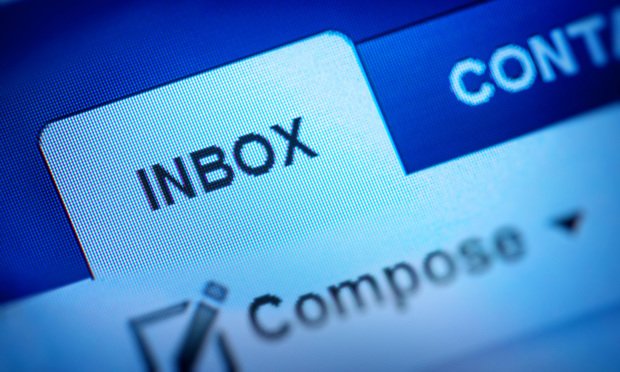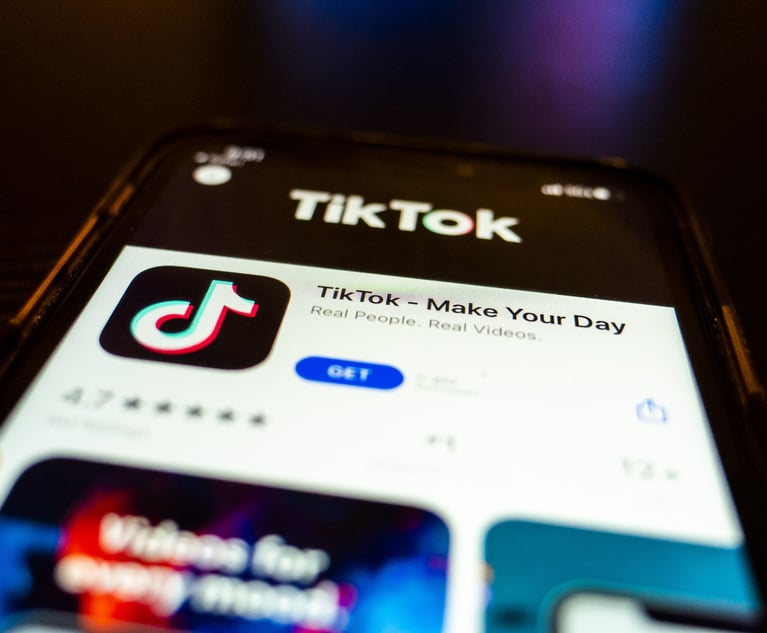How Lawyers Can Maintain Their Sanity in the Age of (Nonstop) Email
From Google Voice to good old-fashioned face-to-face discussions, a panel at the ABA TechShow offered their tips for balancing technology and well-being in the legal industry.
March 02, 2020 at 10:25 AM
4 minute read
The original version of this story was published on Legal Tech News

The mountain of emails greeting a lawyer when they start their work day can be a daunting task. Add in a steady avalanche of emails throughout the day, and a lawyer can easily feel besieged and stressed.
Being inundated with emails was one of various work stressors that the "Friend or Foe: Tech and Well-Being" session at ABA TechShow 2020 discussed on Feb. 28.
Downs Law business manager Jennifer Downs and Arizona state bar lawyer assistance programs director Roberta Tepper offered solutions to alleviate work stresses and foster improved work-life integration.
To address the email pain point, Downs recommended an "email triage," where an attorney sets a dedicated time to check emails sent while they are out of the office. After that allotted time, they need to shift from emails to work on something substantive, she said.
Lawyers can also set up automated response messages notifying clients when they check emails, Tepper added. While the response is automated, Tepper said, it soothes most clients' anxiety and informs them that they will hear back from the attorney.
For internal communication, the panelists recommended leveraging Microsoft Teams, Slack, Trello and other collaboration platforms to cut down the emails stuffing their inboxes.
Along with tech solutions, the panel also offered a non-tech answer to decrease email fatigue: Tepper suggested lawyers and staffers verbally ask a question instead of emailing a concern. She described a weekly "Walk-about Wednesday" rule where her Arizona State Bar department's lawyers and staffers would walk to someone's desk and ask a question instead of emailing them. "Walk-about Wednesday" eventually became a daily event, Tepper said.
If walking to someone's desk isn't practical, Tepper suggested calling someone instead. Similar to speaking face-to-face, phone calls can be less stressful than sending emails where wording can be misconstrued or the communication ignored.
Kicking the habit of emailing first, when the person sits 30 feet away, can be difficult because of the normalcy of emailing in the workplace, the panelists agreed. However, it may be more difficult for younger lawyers and staffers. But with consistent, ongoing coaching, that pattern can be broken.
"This is a training issue, but with younger attorneys everything is a text or email," Tepper said. "It's not an easy discussion because it's changing how you interact and that comfort level of not having that face-to-face. You just have to sit down and say, 'It occurs to me that it's a very stressful environment to have all these emails to serve our members, and so here is what we are going to do for now on.'"
Still, phone calls can also be overwhelming, specifically when a client is calling at late or early hours. The panelists suggested only allowing clients to call a phone number associated with a Google Voice, Sideline or other similar phone platforms to prevent immediate phone access at inappropriate hours.
If a client prefers to text, the lawyer should also define appropriate times for texting. While ZipWhip, MyCase and other platforms capture texts securely with integrations into practice management systems, Tepper and Downs stressed setting scheduled time frames for client texting.
While there are platforms and approaches to alleviate various work stresses, Downs encouraged executive-level staff to discuss the topic. Such discussions allow lawyers and staff to not feel ashamed about truthfully discussing their work pain points.
"When we are talking about well-being, it is this whole work-life interaction, there's no balance there," Downs said. "There's something out of whack, and we need to put it back in healthy ways."
This content has been archived. It is available through our partners, LexisNexis® and Bloomberg Law.
To view this content, please continue to their sites.
Not a Lexis Subscriber?
Subscribe Now
Not a Bloomberg Law Subscriber?
Subscribe Now
NOT FOR REPRINT
© 2025 ALM Global, LLC, All Rights Reserved. Request academic re-use from www.copyright.com. All other uses, submit a request to [email protected]. For more information visit Asset & Logo Licensing.
You Might Like
View All

TikTok Hit With California Class Action for Allegedly Mining Children's Data Without Parental Consent


Apple Disputes 'Efforts to Manufacture' Imaging Sensor Claims Against iPhone 15 Technology
Trending Stories
- 1President-Elect Donald Trump Sentenced to Unconditional Discharge
- 2JCPenney Customer's Slip-and-Fall From Bodily Substance Suit Best Left for a Jury to Decide, Judge Rules
- 3Products Liability: The Absence of Other Similar Claims—a Defense or a Misleading Effort to Sway a Jury?
- 4529 Accounts Are Not Your Divorce Piggybank
- 5Meta Hires Litigation Strategy Chief, Tapping King & Spalding Partner Who Was Senior DOJ Official in First Trump Term
Who Got The Work
Michael G. Bongiorno, Andrew Scott Dulberg and Elizabeth E. Driscoll from Wilmer Cutler Pickering Hale and Dorr have stepped in to represent Symbotic Inc., an A.I.-enabled technology platform that focuses on increasing supply chain efficiency, and other defendants in a pending shareholder derivative lawsuit. The case, filed Oct. 2 in Massachusetts District Court by the Brown Law Firm on behalf of Stephen Austen, accuses certain officers and directors of misleading investors in regard to Symbotic's potential for margin growth by failing to disclose that the company was not equipped to timely deploy its systems or manage expenses through project delays. The case, assigned to U.S. District Judge Nathaniel M. Gorton, is 1:24-cv-12522, Austen v. Cohen et al.
Who Got The Work
Edmund Polubinski and Marie Killmond of Davis Polk & Wardwell have entered appearances for data platform software development company MongoDB and other defendants in a pending shareholder derivative lawsuit. The action, filed Oct. 7 in New York Southern District Court by the Brown Law Firm, accuses the company's directors and/or officers of falsely expressing confidence in the company’s restructuring of its sales incentive plan and downplaying the severity of decreases in its upfront commitments. The case is 1:24-cv-07594, Roy v. Ittycheria et al.
Who Got The Work
Amy O. Bruchs and Kurt F. Ellison of Michael Best & Friedrich have entered appearances for Epic Systems Corp. in a pending employment discrimination lawsuit. The suit was filed Sept. 7 in Wisconsin Western District Court by Levine Eisberner LLC and Siri & Glimstad on behalf of a project manager who claims that he was wrongfully terminated after applying for a religious exemption to the defendant's COVID-19 vaccine mandate. The case, assigned to U.S. Magistrate Judge Anita Marie Boor, is 3:24-cv-00630, Secker, Nathan v. Epic Systems Corporation.
Who Got The Work
David X. Sullivan, Thomas J. Finn and Gregory A. Hall from McCarter & English have entered appearances for Sunrun Installation Services in a pending civil rights lawsuit. The complaint was filed Sept. 4 in Connecticut District Court by attorney Robert M. Berke on behalf of former employee George Edward Steins, who was arrested and charged with employing an unregistered home improvement salesperson. The complaint alleges that had Sunrun informed the Connecticut Department of Consumer Protection that the plaintiff's employment had ended in 2017 and that he no longer held Sunrun's home improvement contractor license, he would not have been hit with charges, which were dismissed in May 2024. The case, assigned to U.S. District Judge Jeffrey A. Meyer, is 3:24-cv-01423, Steins v. Sunrun, Inc. et al.
Who Got The Work
Greenberg Traurig shareholder Joshua L. Raskin has entered an appearance for boohoo.com UK Ltd. in a pending patent infringement lawsuit. The suit, filed Sept. 3 in Texas Eastern District Court by Rozier Hardt McDonough on behalf of Alto Dynamics, asserts five patents related to an online shopping platform. The case, assigned to U.S. District Judge Rodney Gilstrap, is 2:24-cv-00719, Alto Dynamics, LLC v. boohoo.com UK Limited.
Featured Firms
Law Offices of Gary Martin Hays & Associates, P.C.
(470) 294-1674
Law Offices of Mark E. Salomone
(857) 444-6468
Smith & Hassler
(713) 739-1250








